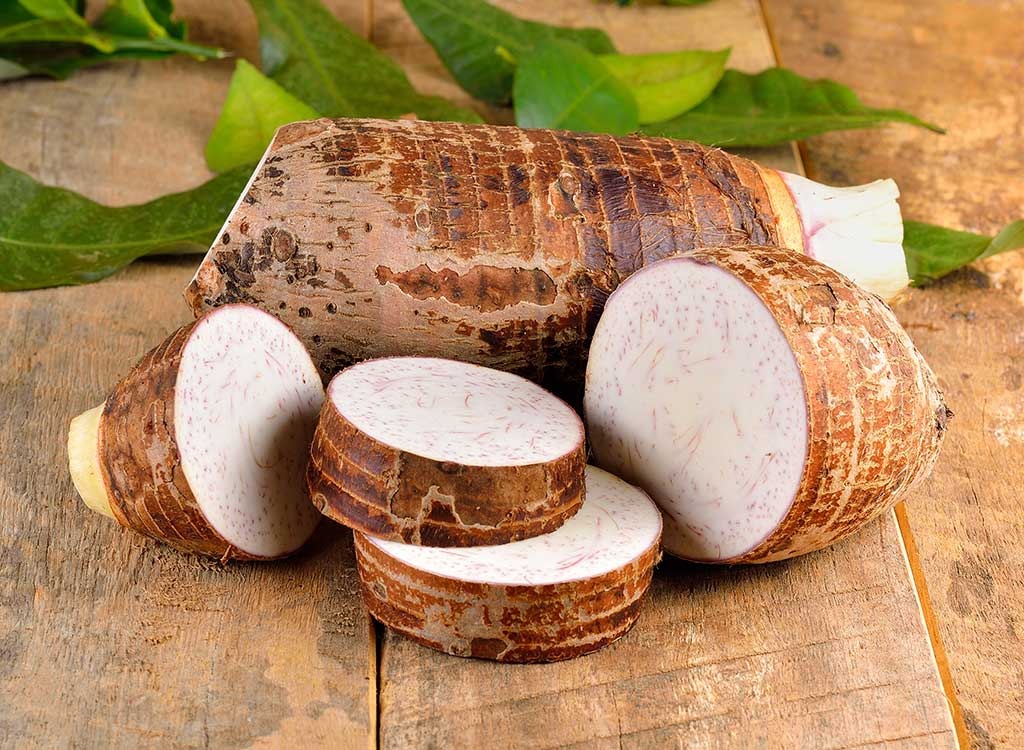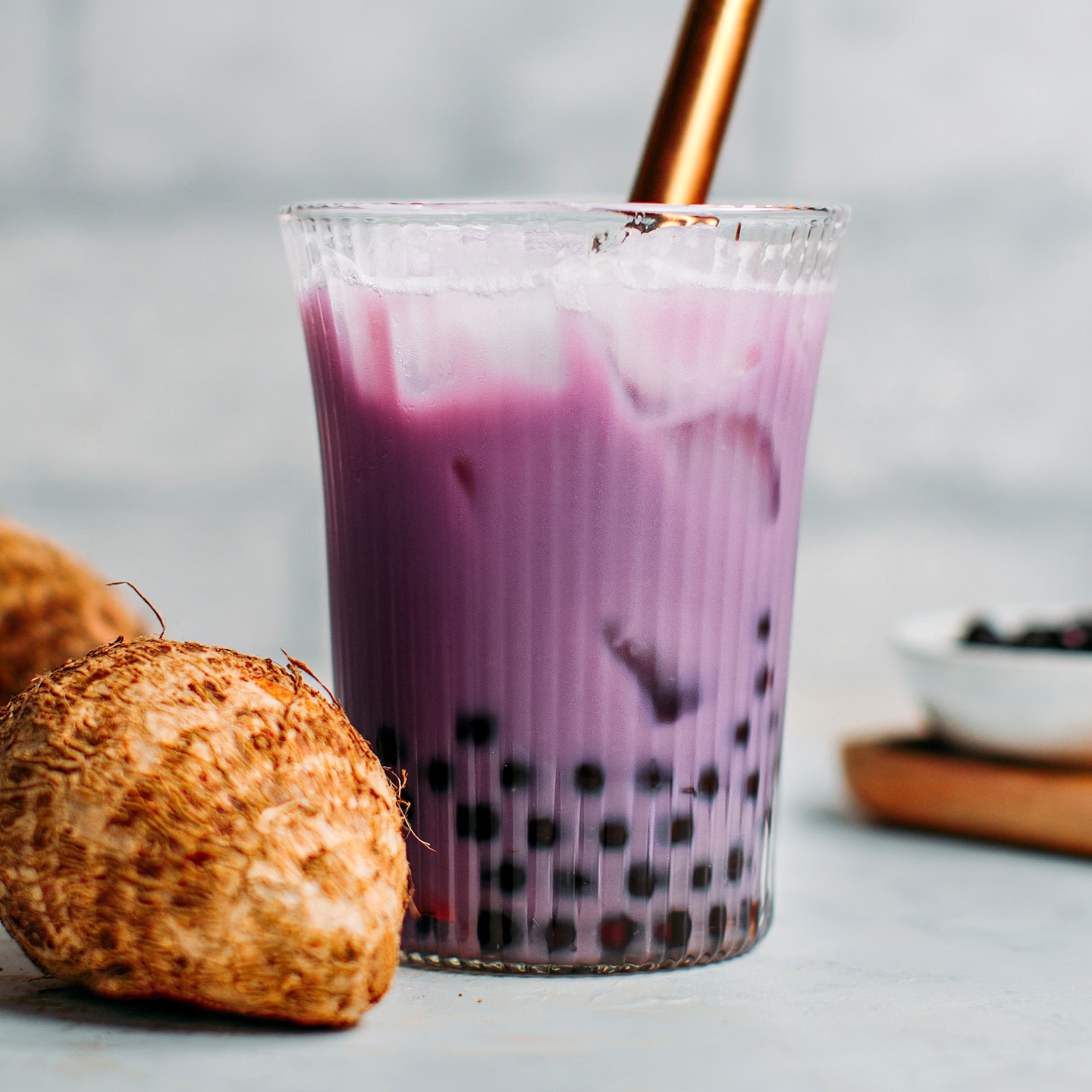When it comes to popular and trendy drinks, the first one that usually comes to mind is bubble tea.
It is a milk tea that is commonly served with tapioca pearls and syrup. One of the first flavors that people try, and one of the most popular flavors in general, is taro milk tea.
It is characterized by its light purple color, subtle vanilla flavor, and creamy texture. However, most people consuming it have no clue what taro is or why their drink is purple.
In this article, we go over exactly what taro is and how it is used.
What Is Taro?
Taro is actually a root vegetable and is often compared to potatoes. It is believed to be one of the earliest cultivated plants and is a staple in African, Oceanic, and South Asian cultures. The largest producer of taro in the world is Nigeria, followed by China.
The corm (a sort of underground thick stem) and leaves are edible but taro is toxic in its raw form. When cooked or steeped in water overnight the taro becomes safe for consumption.
While it has brown skin similar to other root vegetables, the center of taro is white or pale pink, sometimes with purple speckles.

Taro is often used as a potato replacement due to its starchy texture, however, it is slightly sweeter than potatoes.
When used in dessert dishes, the flavor profile of taro changes, and instead of a potato substitute it provides a subtle vanilla flavor and a starchy feel on the tongue. This is why it is a popular flavor in desserts and milk tea.
Nutritional Value Of Taro
Taro is high in nutrients, specifically fiber like other root vegetables. This can help with your gut health.
It contains good quantities of vitamin B1, vitamin B5, magnesium, phosphorus, and potassium. It is especially high in vitamin B6, vitamin E, and manganese.
Vitamin B6 is good for brain development and can keep your immune system and nervous system healthy.
Vitamin E is good for maintaining healthy skin and eyes. It can also strengthen your immune system.
Manganese is a mineral that is found in your body. It is needed to create bones, tissue, and to help with blood clotting.
Taro Vs. Ube
Taro and ube (also known as purple yams) are often confused due to their purple coloring, however, they are 2 different vegetables.
While taro-flavored items are purple, taro itself is actually white or pale pink.
In sweetness, taro is a middle ground between potato and sweet potato. It has a starchy texture and taste. However, when added to dessert it retains the starchy texture but has a slight vanilla flavor.
Ube grows naturally bright purple and is very similar to a sweet potato. It has a sweeter flavor than taro and a softer texture. They are often called purple yams because of their similarity to yams.
What Is Taro Milk Tea?
Taro milk tea is usually made from taro powder since it is cheaper and easier than using fresh taro. Taro powder has food coloring added to it for that iconic purple color. This is primarily for aesthetic purposes.
You are able to make taro milk tea with fresh taro, simply boil it and then blend it into your drink. The color will be either white or light pink but you can add food coloring if you desire.
While it has a vanilla flavor, taro also has a slight nuttiness which makes it a popular choice for first-time bubble tea drinkers.
Taro milk is taro powder added to hot milk, but tea can be added if in need of a caffeine boost. Common teas added to it are green tea, jasmine tea, and black tea.
Similar to other bubble teas, taro milk tea is served with tapioca pearls, usually in brown sugar syrup.

Variations Of Taro Milk Tea
Taro milk tea is very versatile and can be made to suit many people’s tastes. They can be made dairy-free with milk alternatives, have natural sweeteners like honey, or not have any tapioca pearls at all.
As we previously mentioned, you can add tea to it but it is perfectly good on its own and tastes almost like a vanilla milkshake.
Conclusion
Bubble tea can be dated back to Taiwan in the early 1980s, but since it was brought over to America in the 1990s it has continued to adapt.
It is constantly evolving with new flavors coming out frequently.